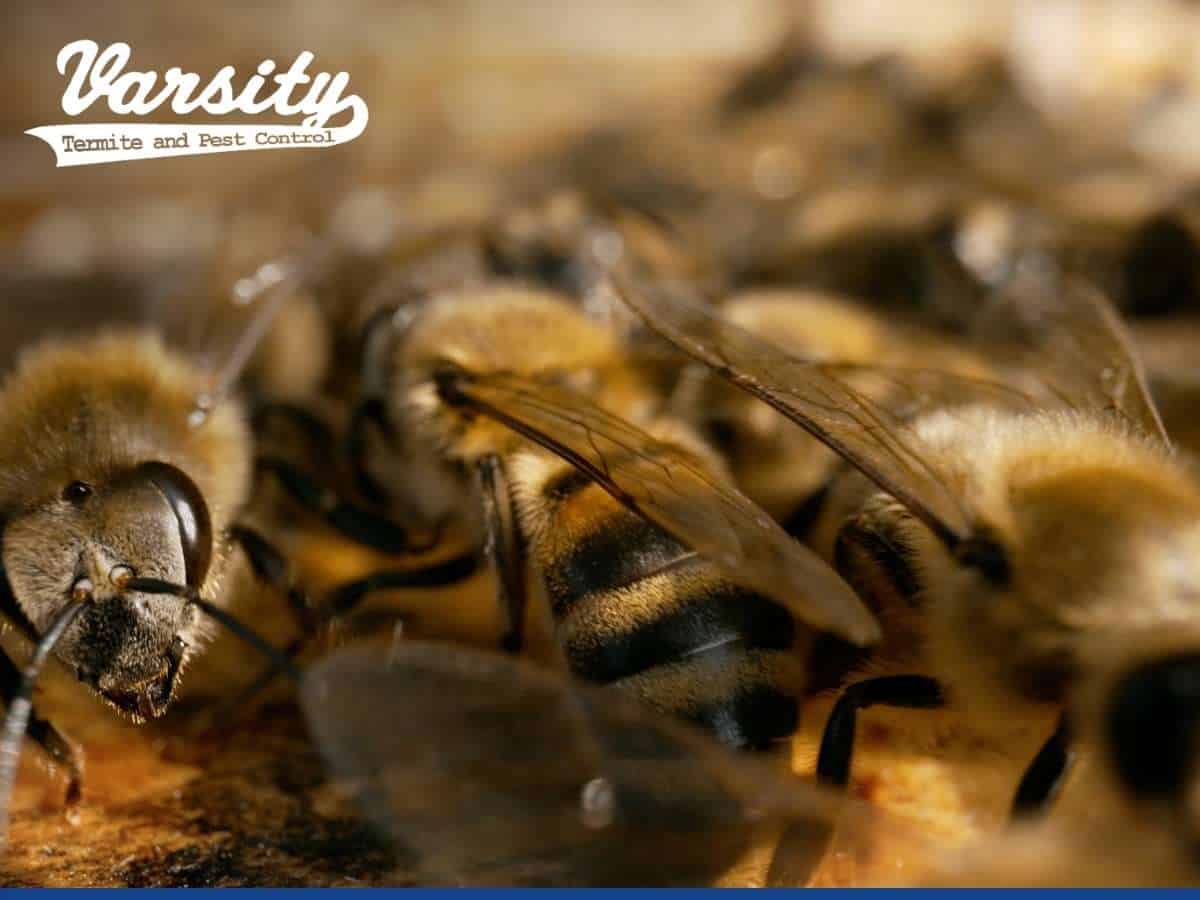How often do you see bees flying around your property? If you don’t know much about them, you might want to read this article, especially if you want to call a pest control technician in Phoenix soon.
Several types of bees live in our environment. Some of them are beneficial to humans, while others are harmful. Knowing their differences is important because they can cause serious health problems if you get stung or bitten.
For the non-expert, most bee species look very similar, and they may also confuse these bees with other insects, some of which, for different reasons, even mimic particular bees.
We have created this brief guide to help you recognize their differences.

One of the insects with which people confuse bees the most is wasps. It’s crucial to understand their differences before trying any removal method.
Bees and wasps are closely related because both belong to the insect order Hymenoptera. However, a few key traits set them apart.
Firstly, bees can only sting once before they die. Wasps, on the other hand, can sting multiple times. Plus, wasps tend to be more aggressive than bees.
If you have ever encountered paper wasps, hornet, or yellowjacket (they are different types of wasps), you know they can be violent if you get too close to them or their nests. They are a serious issue that can make you call a pest control technician in Queen Creek .
Bees act differently. They try to avoid confrontation with humans as much as possible unless provoked. In other words, the only way to get stung by a bee is when you bother them.
Another method to tell them apart is to check their bodies. Bees are chubbier and hairier, with fuzz covering their bodies almost entirely. Wasps, on the other side, have narrow-waisted bodies.
Wasps have bright black and yellow bands around their abdomens, while bees’ bands are not that bright. Bees are more of a light brown or yellowish-brown tone.
These few features should help you differentiate them.
Did you know that North America (not only the U.S. but also Canada and Mexico) has more than 4,000 native bee species? Surprisingly, very few produce honey. Genuine honey bees (Apis mellifera) came from Europe around 1622.
There are 24 varieties of honey bees. The Italian honey bees are the most docile, while the African one is the most aggressive.
These bees usually live in hives controlled by beekeepers to produce honey. But, as you can guess, they can cause trouble if you find them in your attic or favorite tree. Contact a trusted pest control technician in Glendale if you see these bees at home.
Mining bees live mostly underground, so you won’t see them flying around that often. You might see them enter and exit their nest from a small hole in the ground. They can live above ground just a few weeks out of the year.
Contrary to common belief, over 70% of the 20,000 bee species live underground. This fact debunks the myth that bees are mostly flying around flowers.
Miner bees come in many colors, including red, green, or just yellow and black.
Consider honey bee removals if you see dozens of miner bees coming and going off the ground, especially if you or any of your loved ones are allergic to bee stings.
The most notorious difference between bumblebees and other bee species is their body size. Bumblebees are larger than honey bees. Plus, you will probably see bumblebees slowly flying from one flower to the next in your garden.
Bumblebees have furry bodies with yellow and black patterns. They also make a buzzing noise while flying. They can create colonies of more than 200 bees, so contact a pest control technician in Gilbert if you see many of these bees at home.
As the name implies, carpenter bees live in wood. They’re the largest bee species on the continent. To give you an idea of their size, they can grow up to 1 inch long, so you can easily spot them. They may come in and out of trees, untreated wood, or woodpiles.
To keep these bees out of your property, paint the surface of your wood. They only live in untreated wood, so a wood painting should solve the issue.
Although bees rarely attack humans, you should consider bee removal if you see many of them at home. Contact Varsity Termite & Pest to get a trusted bee removal service so you can protect yourself and your loved ones.

Published By:
Varsity Termite and Pest Control – Gary Dobert
6056 E Baseline Rd #122
Mesa, AZ85206
Office: 602-757-8252
Email: service@varsity.myfavoritewebdesigns.com
Website: https://varsity.myfavoritewebdesigns.com/


© Varsity Termite and Pest Control - Google - Privacy Policy